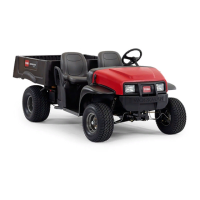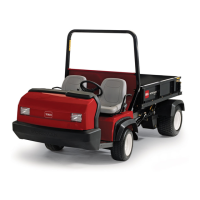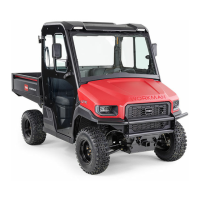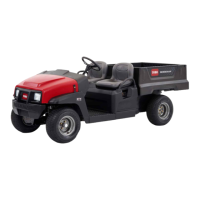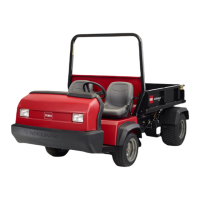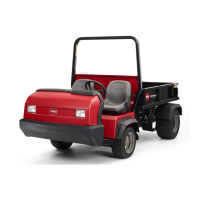19
Filling the Fuel Tank
The fuel tank capacity is approximately 7 gallons (26.5 l).
1. Shut the engine off and set the parking brake.
2. Clean the area around the fuel tank cap (Fig. 12).
1
Figure 12
1. Fuel tank cap
3. Remove the fuel tank cap.
4. Fill the tank to about 1 inch (25 mm) below the top of
tank, (bottom of the filler neck). This space in the tank
allows gasoline to expand. Do not overfill.
5. Install the fuel tank cap securely. Wipe up any fuel that
may have spilled.
Checking the Transmission Oil
The transaxle fluid level should be at the bottom of the
level indicator hole (Fig. 13). If it is not, fill the reservoir
with the appropriate fluid; refer to Changing the Transaxle
Fluid, page 35, steps 3 and 4.
m–4849
1
Figure 13
1. Level indicator hole
Operation
Note: Determine the left and right sides of the machine
from the normal operating position.
Think Safety First
Please carefully read all of the safety instructions and
decals in the safety section. Knowing this information
could help you or bystanders avoid injury.
Controls
Accelerator Pedal
The accelerator pedal (Fig. 14) gives the operator the
ability to vary ground speed of the vehicle. Depressing the
pedal starts the engine. Depressing the pedal farther
increases ground speed. Releasing the pedal will slow the
vehicle and the engine will stop running. Maximum
forward speed is 16 MPH (26 km/h).
Brake Pedal
The brake pedal is used to stop or slow the vehicle
(Fig. 14).
Brakes can become worn or can be misadjusted
resulting in personal injury.
If brake pedal travels to within 1 in. (25 mm) of
the vehicle floor board, the brakes must be
adjusted or repaired.
Caution
1
m–5633
2
3
Figure 14
1. Accelerator pedal
2. Brake pedal
3. Parking brake
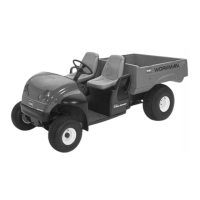
